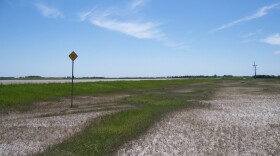I mentioned in last week’s Natural North Dakota that estimates for how many seeds a cottonwood tree could produce in a year may range up to 48 million. Clearly all those small seeds do not develop into cottonwood trees. But a very small number do fall on the ground with the right conditions of soil, moisture, sunlight, little competition, and other factors to become the next generation of cottonwood trees.
It is a different story for some other plants — acorns from oak trees, for example.
Should a plant produce lots of small seeds or a smaller number of larger seeds? The answer to that question is “it depends.” Although there is a continuum of variation in many factors relating to reproductive strategies in plants as well as other organisms, scientists have identified two opposing strategies.
Some plants, for example, are short lived and mature quickly. Think weedy annuals or short-lived perennials. They also put a large amount of energy into producing lots of seeds (typically small seeds) that get widely dispersed. As you might expect, many of those small seeds will never fall to the ground and find the right conditions to germinate and develop into a mature plant, but a small portion will. These plants commonly grow in disturbed areas or early successional communities. Plants with these characteristics are referred to as r-selected species.
Just the opposite is true for the other group, what scientists refer to as K-selected species. They mature slowly and are long lived. They also put a much smaller proportion of effort into seed production (typically larger seeds) which are not as widely dispersed. These plants are more adapted to stable condition or later successional communities. Think mature forest species.
So, as you watch the myriad of plants coming into flower and setting seed this summer, give some consideration to how the energy invested by the plant into producing the number and size of seeds, and how they are dispersed influences where the plants grow and how they are adapting to the range of disturbed or stable environmental conditions and other factors. They are expressions of different reproductive strategies.
Further Reading:




